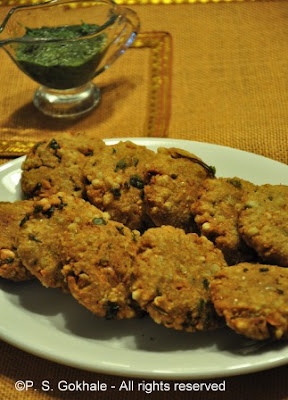I have eaten beet roots in a variety of preparations in both the raw and cooked form, including cooked curries, salads and raitas. However, I had never tasted a sweet made from beet root. A few weeks ago, I had gone to a local Indian restaurant and I got a serving of sweet with my order. It was something I had never eaten before. It had a dark purple, blackish color, and it looked like the main ingredient had been grated. I hesitated a little before tasting it and I am quite glad that I did, because it turned out to be delicious. It was sweet and had a caramelized taste. Unfortunately, I never did get a chance to ask the server what it was made of or what it was called. I kept pondering over this dish the entire evening and finally came to the conclusion that it was probably made from beet root. Well, luckily for me, I had a couple of beet roots in my refrigerator and I was able to carry out my experiment the very next day. And the conclusion was that the sweet I had was beet root halwa indeed and it is one of the most delicious ways to use beet root.
Ingredients
2 large beet roots, peeled and grated
2 tbsp ghee/clarified butter
2 tbsp mava/khoa/khoya (optional)
1/4 cup roasted cashewnuts (optional)
1/2 tsp cardamom powder
4-5 tbsp sugar, adjust to taste
1 tbsp raisins
Method
In a pan, heat the ghee. To this add the grated beet root and stir. Cover the pan. Let the beet root cook completely till softened. Stir occasionally to ensure that the beet root is not sticking to the bottom of the pan. Then add the mava (you can skip this), cardamom powder, raisins and sugar. The sugar will melt and the mixture will turn liquidy. Now, cook the mixture till the mixture solidifies. You can cook a little longer to let the sugar caramelize a little. Make sure that the halwa doesn't burn. Add cashews and serve warm. A healthy and tasty dessert which is fast to cook as well.
Tips
This is a faster cooking halwa compared to ones made carrots. Also, you can add some powdered milk instead of the mava to give it a creamy texture. I did not try adding milk or cream, and it wasn't needed either. To roast the cashews, in a pan, add a little ghee. Once heated, add the cahews and stir them, till they are a lightly browned. You can add more or lesser sugar based on how sweet the beet roots are as well as how many raisins are being added.
Ingredients
2 large beet roots, peeled and grated
2 tbsp ghee/clarified butter
2 tbsp mava/khoa/khoya (optional)
1/4 cup roasted cashewnuts (optional)
1/2 tsp cardamom powder
4-5 tbsp sugar, adjust to taste
1 tbsp raisins
Method
In a pan, heat the ghee. To this add the grated beet root and stir. Cover the pan. Let the beet root cook completely till softened. Stir occasionally to ensure that the beet root is not sticking to the bottom of the pan. Then add the mava (you can skip this), cardamom powder, raisins and sugar. The sugar will melt and the mixture will turn liquidy. Now, cook the mixture till the mixture solidifies. You can cook a little longer to let the sugar caramelize a little. Make sure that the halwa doesn't burn. Add cashews and serve warm. A healthy and tasty dessert which is fast to cook as well.
Tips
This is a faster cooking halwa compared to ones made carrots. Also, you can add some powdered milk instead of the mava to give it a creamy texture. I did not try adding milk or cream, and it wasn't needed either. To roast the cashews, in a pan, add a little ghee. Once heated, add the cahews and stir them, till they are a lightly browned. You can add more or lesser sugar based on how sweet the beet roots are as well as how many raisins are being added.






















